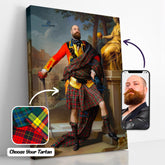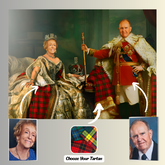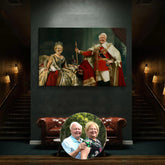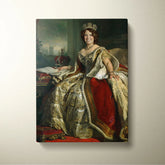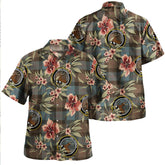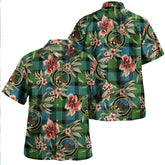-
Clan Blair Family Tartan 2D T-shirt XI38 - Black
Blair Family Tartan Clan 2D T-shirt XI38 Product detail: This new 2D t-shirt features a relaxed fit for Men and Women, durable, breathable and soft Made from 100% cotton The High-resolution graphic artwork is printed on the entire shirt. Machine wash cold. The print...- $29.25
- $29.25
- Unit price
- per
- Black
- White
- Navy
- Storm Grey
-
Blair Modern Tartan Clan Crest Badge Aloha Hawaiian Shirt Tropical Old Style WQ48 - Blair Modern Tartan
Blair Modern Tartan Clan Crest Badge Aloha Hawaiian Shirt Tropical Old Style WQ48 These Hawaiian shirts and shorts are suitable for hot summer days or beach trips with your friends, family, and loved ones. This is an excellent gift, vacation outfit, or simply revamp...- $43.25
- $43.25
- Unit price
- per
- Blair Modern Tartan
-
Blair Weathered Tartan Clan Crest Badge Aloha Hawaiian Shirt Tropical Old Style NH33 - Blair Weathered Tartan
Blair Weathered Tartan Clan Crest Badge Aloha Hawaiian Shirt Tropical Old Style NH33 These Hawaiian shirts and shorts are suitable for hot summer days or beach trips with your friends, family, and loved ones. This is an excellent gift, vacation outfit, or simply revamp...- $43.25
- $43.25
- Unit price
- per
- Blair Weathered Tartan
-
Blair Ancient Tartan Clan Crest Badge Aloha Hawaiian Shirt Tropical Old Style CT62 - Blair Ancient Tartan
Blair Ancient Tartan Clan Crest Badge Aloha Hawaiian Shirt Tropical Old Style CT62 These Hawaiian shirts and shorts are suitable for hot summer days or beach trips with your friends, family, and loved ones. This is an excellent gift, vacation outfit, or simply revamp...- $43.25
- $43.25
- Unit price
- per
- Blair Ancient Tartan
-
Clan Blair Modern Tartan Christmas Ugly Sweater EK73 - Blair Modern Tartan
Clan Blair Modern Tartan Christmas Ugly Sweater EK73 SIZE CHART- From $64.25
- From $64.25
- Unit price
- per
- Blair Modern Tartan
-
Clan Blair Modern Crest Tartan Acrylic Christmas Ornament AO59 - Blair Modern Tartan
- From $21.25
- From $21.25
- Unit price
- per
- Blair Modern Tartan
-
Clan Blair Modern "Merry Christmas" Tartan Acrylic Ornament IL23 - Blair Modern Tartan
Clan Blair Modern 'Merry Christmas' Tartan Acrylic Ornament IL23 “Decorating the house” may be one of the most exciting tasks jotted down on your to-do list when the holiday season approaches. Yet, since shabby, dull-looking pieces of decor infest the marketplace, finding real gems...- From $21.25
- From $21.25
- Unit price
- per
- Blair Modern Tartan
-
Clan Blair Modern Tartan Gnome Heart Ceramic Ornament YG83 - Blair Modern Tartan Gnome
Clan Blair Modern Tartan Gnome Heart Ceramic Ornament YG83 One of the best things about Christmas is that it gives you an excuse to dress up your home with all of the lovely ornaments we associate with the holiday season. With so many different...- From $19.25
- From $19.25
- Unit price
- per
- Blair Modern Tartan Gnome
-
Clan Blair Modern Tartan Crest Heart Ceramic Ornament RU27 - Blair Modern Tartan
Clan Blair Modern Tartan Crest Heart Ceramic Ornament RU27 One of the best things about Christmas is that it gives you an excuse to dress up your home with all of the lovely ornaments we associate with the holiday season. With so many different...- From $19.25
- From $19.25
- Unit price
- per
- Blair Modern Tartan
-
Clan Blair Modern Tartan Gnome Round Ceramic Ornament AZ79 - Blair Modern Tartan
Clan Blair Modern Tartan Gnome Round Ceramic Ornament AZ79 One of the best things about Christmas is that it gives you an excuse to dress up your home with all of the lovely ornaments we associate with the holiday season. With so many different...- From $19.25
- From $19.25
- Unit price
- per
- Blair Modern Tartan
-
Clan Blair Coat Of Arms - Irish Family Crest St Patrick's Day Classic CapIJ69 - Classic Cap - Blair Coat Of Arms St Patrick's Day Classic Cap
Clan Blair Coat Of Arms - Irish Family Crest St Patrick's Day Classic CapIJ69 All of our Classic Caps are custom-made-to-order and handcrafted to the highest quality standards. Add style and personality to your hat collection with a custom printed classic cap! Constructed with...- $42.45
- $42.45
- Unit price
- per
- Classic Cap - Blair Coat Of Arms St Patrick's Day Classic Cap
-
Clan Blair Coat Of Arms - Irish Family Crest Classic Cap KY52 - Blair Coat Of Arms
Clan Blair Coat Of Arms - Irish Family Crest Classic Cap KY52 All of our Classic Caps are custom-made-to-order and handcrafted to the highest quality standards. Add style and personality to your hat collection with a custom printed classic cap! Constructed with 100% premium...- $33.45
- $33.45
- Unit price
- per
- Blair Coat Of Arms
-
Clan Blair Modern Tartan Crest Clogs Classic IM45 - Blair Modern Tartan
Clan Blair Modern Tartan Crest Clogs Classic IM45 Our shoes do run a bit small. We recommend sizing up if you want to be comfortable. Size Guide Product measurements may vary by up to 3~5mm There are two different ways to wear——you can wear...- $42.25
- $42.25
- Unit price
- per
- Blair Modern Tartan
-
Clan Blair Modern Tartan Clogs Classic CC78 - Blair Modern Tartan
Clan Blair Modern Tartan Clogs Classic CC78 Our shoes do run a bit small. We recommend sizing up if you want to be comfortable. Size Guide Product measurements may vary by up to 3~5mm There are two different ways to wear——you can wear it...- $42.25
- $42.25
- Unit price
- per
- Blair Modern Tartan
-
Clan Blair Modern Tartan Christmas Tree Skirt GB63 - Blair Modern Tartan
Clan Blair Modern Tartan Christmas Tree Skirt GB63 Product detail: 100% polyester tricot fabric, thick and durable. Suitable for not only Christmas but also the whole winter. Velcro closure and center hole allows for easy installment and removal. One-side Printing Machine washable on cold...- From $48.25
- From $48.25
- Unit price
- per
- Blair Modern Tartan
-
Clan Blair Dress Tartan Christmas Tree Skirt CM52 - Blair Dress Tartan
Clan Blair Dress Tartan Christmas Tree Skirt CM52 Product detail: 100% polyester tricot fabric, thick and durable. Suitable for not only Christmas but also the whole winter. Velcro closure and center hole allows for easy installment and removal. One-side Printing Machine washable on cold...- From $48.25
- From $48.25
- Unit price
- per
- Blair Dress Tartan
-
Clan Blair Modern Tartan Halloween Pumpkin Slippers, Fluffy Spooky Slippers VY12 - Blair Modern Tartan
Clan Blair Modern Tartan Halloween Pumpkin Slippers, Fluffy Spooky Slippers VY12 Product Informations: Material: 100% polyester outer-layer and lining, rubber soles. These personalized slippers are a home staple that now becomes even more stylish with your custom touch. Each slipper is made 100% with...- $38.45
- $38.45
- Unit price
- per
- Blair Modern Tartan
-
Clan Blair Modern Tartan Christmas Gift Bag FB22 - Blair Modern Tartan
Clan Blair Modern Tartan Christmas Gift Bag FB22 Christmas bags are perfect decorations for Christmas, indoors, outdoors, gardens, courtyards, etc. It is the perfect gift for family and friends. Product Details: Material: Brushed Fabric. Reusable-made of high-quality soft fabric, comfortable to the press, well-made,...- $19.45
- $19.45
- Unit price
- per
- Blair Modern Tartan
-
Clan Blair Modern Tartan Crest Christmas Santa Hat YI21 - Blair Modern Tartan
Clan Blair Modern Tartan Crest Christmas Santa Hat YI21 Product Detail: Material: Polyester Design Area: Single side full width printing Sizes:'S (26 x 38 cm); L (32.5 x 45 cm)- From $25.41
- From $25.41
- Unit price
- per
- Blair Modern Tartan
-
Clan Blair Dress Tartan Crest Christmas Santa Hat OU24 - Blair Dress Tartan
Clan Blair Dress Tartan Crest Christmas Santa Hat OU24 Product Detail: Material: Polyester Design Area: Single side full width printing Sizes:'S (26 x 38 cm); L (32.5 x 45 cm)- From $25.41
- From $25.41
- Unit price
- per
- Blair Dress Tartan
Ex: Your Tartan + Product
Popular Products
Turn Me Royal Personalized Portrait from Your Photo, Custom Tartan. Custom Canvas Wall Art as Gift for Men
- From $32.45
- From $32.45
- Unit price
- / per
Royalty Couple Personalized Portrait from Your Photo, Custom Tartan. Custom Canvas Wall Art
- From $47.45
- From $47.45
- Unit price
- / per
The Queen Personalized Portrait from Your Photo, Custom Tartan. Custom Canvas Wall Art as Gift for Women
- From $32.45
- From $32.45
- Unit price
- / per
List Of Tartan
-
Clan A
- Abercrombie Tartan
- Aberdeen Tartan
- Abernethy Tartan
- Adair Tartan
- Adam Tartan
- Ayrshire Tartan
- Agnew Tartan
- Aikenhead Tartan
- Ainslie Tartan
- Aiton Tartan
- Allan Tartan
- Alexander Tartan
- Allardice Tartan
- Allison Tartan
- Anderson Tartan
- Angus Tartan
- Anstruther Tartan
- Arbuthnot Tartan
- Armstrong Tartan
- Arnott Tartan
- Auchinleck Tartan
- Ayrshire Tartan
-
Clan B
- Baillie Tartan
- Bain Tartan
- Baird Tartan
- Balfour Tartan
- Bannatyne Tartan
- Bannerman Tartan
- Barclay Tartan
- Baxter Tartan
- Beaton Tartan
- Bell Tartan
- Belshes Tartan
- Bethune Tartan
- Beveridge Tartan
- Binning Tartan
- Bisset Tartan
- Blackadder Tartan
- Blackstock Tartan
- Black Watch Tartan
- Blair Tartan
- Blane Tartan
- Blyth Tartan
- Borthwick Tartan
- Boswell Tartan
- Bowie Tartan
- Boyd Tartan
- Boyle Tartan
- Brisbane Tartan
- Brodie Tartan
- Brown/ Broun Tartan
- Bruce Tartan
- Buccleuch Tartan
- Buchan Tartan
- Buchanan Tartan
- Burnett Tartan
- Burns Tartan
- Butter Tartan
- Byres Tartan
-
Clan C
- Cairns Tartan
- Calder Tartan
- Callander Tartan
- Cameron Tartan
- Campbell Tartan
- Campbell of Breadalbane Tartan
- Campbell of Cawdor Tartan
- Carmichael Tartan
- Carnegie Tartan
- Carruthers Tartan
- Cathcart Tartan
- Chalmers Tartan
- Charteris Tartan
- Chattan Tartan
- Cheyne Tartan
- Chisholm Tartan
- Christie Tartan
- Clark Tartan
- Clelland Tartan
- Clephan Tartan
- Clergy Tartan
- Cochrane Tartan
- Cockburn Tartan
- Colquhoun Tartan
- Colville Tartan
- Cooper Tartan
- Couper Tartan
- Craig Tartan
- Cranstoun Tartan
- Crawford Tartan
- Crichton Tartan
- Crief District Tartan
- Crosbie Tartan
- Cumming Tartan
- Cunningham Tartan
- Currie Tartan
- Clan D
- Clan E
- Clan F
- Clan G
- Clan H
- Clan I
- Clan J
- Clan K
- Clan L
-
Clan M
- Maitland Tartan
- Malcolm Tartan
- Mar Tartan
- Marjoribanks Tartan
- Maxtone Tartan
- Matheson Tartan
- Maule Tartan
- Maxwell Tartan
- Meldrum Tartan
- Melville Tartan
- Menzies Tartan
- Mercer Tartan
- Middleton Tartan
- Moffat Tartan
- Moncrieffe Tartan
- Montgomery Tartan
- Monypenny Tartan
- Moncreiffe Tartan
- Monteith Tartan
- Morrison Tartan
- Mouat Tartan
- Moubray Tartan
- Mow Tartan
- Muir_More Tartan
- Muirhead Tartan
- Munro Tartan
- Murray Tartan
- Murray of Atholl Tartan
-
Clan Mc/Mac
- MacAlister Tartan
- MacArthur Tartan
- MacAlpine Tartan
- MacAulay Tartan
- MacBain Tartan
- MacBean Tartan
- MacBeth Tartan
- MacCallum Tartan
- MacCraig Tartan
- MacColl Tartan
- MacCorquodale Tartan
- MacDiarmid Tartan
- MacDonald Tartan
- MacDonald of Clanranald Tartan
- MacDonald of Sleat Tartan
- MacDonnell of Glengarry Tartan
- MacDonnell of Keppoch Tartan
- MacDougall Tartan
- MacDowall Tartan
- MacDuff Tartan
- MacEwen_MacEwan Tartan
- MacEdward Tartan
- MacFarlane Tartan
- MacGill Tartan
- MacGillivray Tartan
- MacGregor Tartan
- MacGowan (McGowan) Tartan
- MacHardy Tartan
- MacIan Tartan
- MacInnes Tartan
- MacIntyre Tartan
- MacKay Tartan
- MacKillop Tartan
- MacKellar Tartan
- Mackinlay Tartan
- MacKenzie Tartan
- Mackie Tartan
- MacKinnon Tartan
- MacKintosh / MacIntosh Tartan
- MacLeod Tartan
- MacMillan Tartan
- MacNab Tartan
- MacNaughton Tartan
- MacNeil / MacNeill Tartan
- MacNeil of Colonsay Tartan
- MacNicol Tartan
- MacPhail Tartan
- MacPhee_MacFie Tartan
- MacPherson Tartan
- MacQuarrie Tartan
- MacQueen Tartan
- MacRae Tartan
- MacRow Tartan
- MacSporran Tartan
- MacTaggart Tartan
- MacTavish Tartan
- MacThomas Tartan
- McCorquodale Tartan
- McCulloch Tartan
- McFadzen Tartan
- McGeachie Tartan
- McIver Tartan
- McKerrell Tartan
- Clan N
- Clan O
- Clan P
- Clan R
-
Clan S
- Sandilands Tartan
- Scott Tartan
- Scrymgeour Tartan
- Selkirk Tartan
- Sempill Tartan
- Seton Tartan
- Shaw Tartan
- Shepherd Tartan
- Sinclair Tartan
- Skene Tartan
- Skirving Tartan
- Smith Tartan
- Somerville Tartan
- Spalding Tartan
- Spens Tartan
- Spottiswood Tartan
- Stevenson Tartan
- Stewart Tartan
- Stewart of Appin Tartan
- Stirling Tartan
- Strachan Tartan
- Straiton Tartan
- Strange Tartan
- Strathclyde District Tartan
- Stuart of Bute Tartan
- Sutherland Tartan
- Swinton Tartan
- Clan T
- Clan U W Y
- Request Your Clan
Clan Blair (Blair Tartan)
1. About Clan Blair (Blair Tartan)
2. Clan Blair History (Blair Tartan)
The name Blair is derived from the Gaelic word "Blar," which means "open space or field" and is thus used in a variety of place names throughout Scotland.
Although the name was once more often written "Blare," this spelling has long since disappeared.
Despite the fact that many people have the surname Blair, it is generally recognized that the name alludes to two distinct clans: the Blairs of Blair from Ayrshire and the Blairs of Balthayock from Perthshire.
2.1 THE BLAIRS OF BLAIR
Timothy Pont makes reference to the records of the Kilwinning Monastery in 1608. These documents demonstrate that King William I of Scots (1165–1214), bestowed the title Barony of Blair upon Jean Francois (John Francis) of Normandy.
Along with the title, he would have received land, giving the family a significant amount of power. One of King John of England's daughters is believed to have been married to William de Blair, the grandson of John Francis de Blair.
A staunch ally of Sir William Wallace, his successor, Sir Bryce de Blair, was killed in the Barns of Ayr massacre in 1296.
After fighting beside him at Bannockburn in 1314, Sir Bryce's nephew Roger de Blair was given a knighthood by Robert the Bruce.
Following this, the clan rose to prominence in the area and had a number of successful marriages up until 1732, when William Blair of Blair's death brought an end to the clan's original line of succession.
Northern Ayrshire is home to Blair Castle, also known as Blair House, which served as the Blairs of Blair's ancestral home. By 1201, a stone Norman Keep with a moat and drawbridge had taken its place, which had originally been a wooden structure.
This Norman building is still there in Blair House today.
2.2 THE BLAIRS OF BALTHAYOCK
Stephen de Blair, who had property in the region that is now known as Blairgowrie, is the ancestor of the Blairs of Balthayock. He lived in the 12th century.
A witness to a charter of property at Balgillo (in Angus) named by an abbot of the abbey of Arbroath is the same Stephen de Blare/Blair.
Alexander de Blair, another Blair of Balthayock, who was most likely Stephens' son and who witnessed a charter in or around 1214.
He acquired the Cults holdings in Fife, which the Blairs had long owned, when he wed Ela, Hugh de Nyden's daughter. William de Blair, Alexander's son, was knighted by King Alexander II of Scotland and appointed Steward of Fife in 1235.
The book "The Blairs of Balthayock and Their Cadets" by Jack Blair, which is available from the Clan Blair Society, contains more information about the history of the Blairs of Balthayock.
For many years, the two families fought about who should hold the Chiefship. By declaring in 1658 that "The eldest male of either of the two Families would have precedence over the younger to the Chieftainship," King James VI finally put an end to the conflict.
Despite the fact that this assertion implies a connection between the two families, there are no records of marriages between Ayrshire and Perthshire, and given that the two families' coats of arms are distinct, it is most likely true that the two families have distinct ancestries.
3. Clan Blair Tartans
Modern family tartan that is straightforward but powerful is the Blair tartan. The Scottish Tartan Society measured the threadcount of a hand-colored tartan strip that had been in James Mackinlay's collection since the 1920s or 1930s.
'Modern' refers to the color's tint, which is typically darker.
G/12 R6 G48 K36 B48 R6 B/12 Threadcount
Blair Modern
4. Clan Blair Crest & Coats of Arms
4.1 Clan Blair Crest
Worn by all of the name and ancestry
4.2 Clan Blair Coats of Arms
Note on Coats of Arms: A coat of arms is given to an individual under Scottish heraldic law (with the exception of civic or corporate arms). A 'family coat of arms' does not exist.
With the exclusions listed above, the weapons depicted below are personal weapons. The only person authorized to use these weapons is the grantee.
Arms: Argent on a saltire between in the flanks two maunches, the sinister contournee, Sable five mascles Or.
Crest: a robin Or breasted Gules.
Motto: DIGNE FERO (I carry with dignity)
Supporters: Dexter a sea unicorn Argent armed crined and tail Sable finned Argent, and sinister a zebra Proper
Tags:
Clan-blair
5. Clan Blair Places & People
5.1 John Blair (c1300)
A Benedictine monk named John Blair served as Sir William Wallace's chaplain and comrade in arms while he was Scotland's governor. He also wrote on Wallace's life.
5.2 John Blair (died – 1782)
John was born and raised in Edinburgh, but he left Scotland when he was young to work as an usher at a school in London's Hedge Lane.
The Chronology and History of the World, from Creation to the Year of Christ 1753, was published by him in 1754. Reprints of it appeared in 1756, 1768, and 1814. Willoughby Rosse updated and expanded it for publication in Bohn's "Scientific Library" in 1856. He was chosen as a fellow of the Royal Society in 1755.
He served as the Princess Augusta of Saxe-Gotha's chaplain and the Prince Edward, Duke of York and Albany's math instructor in 1757. He was selected as a fellow of the Society of Antiquaries in 1761.
5.3 Robert Blair (1748–1828)
The University of Edinburgh appointed Robert Blair as its first Regius Professor of Astronomy in 1785. He also came up with the term for the aplanatic lens. This was an important development in the effort to lessen optical system aberration. He also conducted experiments using hollow glasses that contained various liquids.
- Choosing a selection results in a full page refresh.

